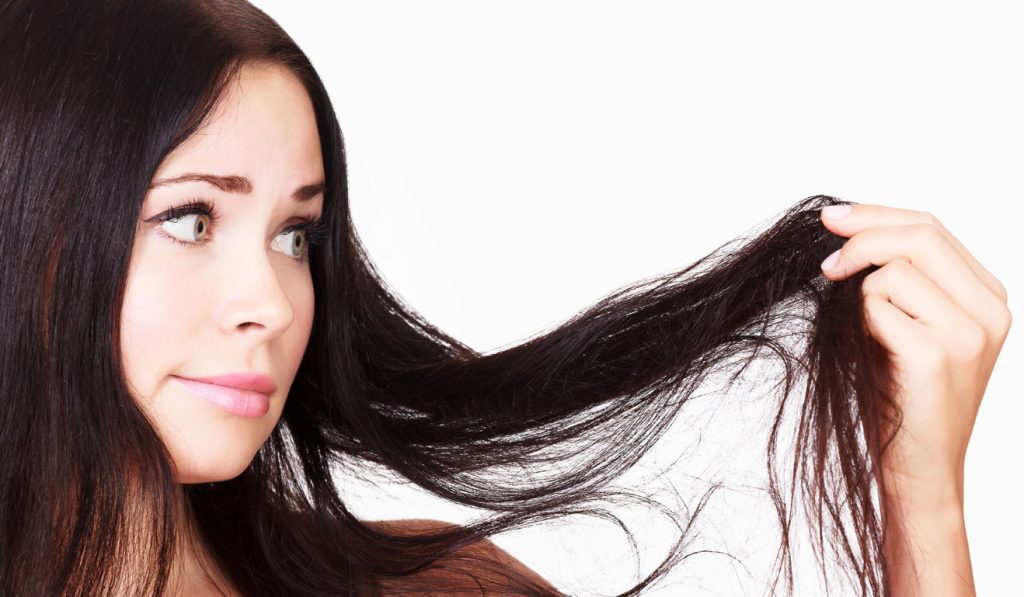Oil Hair Treatment is a ritual, or rather a care treatment being very popular for centuries and described in detail in Ayurveda (Eastern philosophy and medicine). Nowadays, this hair treatment celebrates its great comeback because women have started becoming more aware of what they apply to the hair as they have understood that even the most exclusive shampoo isn’t that outstanding as it’s advertised to be.
Hair cosmetics such as shampoos or conditioners contain plenty of monohydric alcohols, silicones and other similar products that put sebaceous glands out of order and contribute to hair damage.

Moreover, our knowledge concerning hair care products has developed to such an extent that we no longer believe that a shampoo is able to regenerate or nourish hair on its own. We’re aware that substances of properly chosen molecules are able to regenerate hair, penetrate deep into hair bulbs and get inside the hair where their action is twofold. Once inside hair, the natural substances start fixing the strands and delivering protection against the urban pollution. Such products are hair oils which are natural substances extracted thanks to the cold-press process of seeds and nuts that have been long known by many people for their beautifying action.
Natural Hair Oils & Oil Hair Treatment
Thanks to natural hair oils the Oil Hair Treatment can be performed. What does it depend on? It’s an extremely simple care procedure that depends on applying a natural oil to hair. The procedure can be compared with putting on a hair mask. However, in most cases, hair masks aren’t absorbed fully as natural oils are.
Oil Hair Treatment’s aim is to get inside hair and nourish hair bulbs. In fact, hair bulbs are responsible for health, beauty and proper growth of the strands. Therefore, hair bulbs should be considered as the very centre of our attention during every care we take upon the strands. Oil Hair Treatment helps balance the processes that take place in the scalp, leaving it clean. Moreover, the procedure reinforces hair bulbs and facilitate their growth and development. Thanks to this, strands look pretty and are full of health.
Hair Porosity – Theory, Practice, Health of Hair
Natural oils that are destined for Oil Hair Treatment have to match hair porosity level, which is the degree at which hair cuticles are risen from the hair shaft. It’s important to use the right kind of oil because hair oils are made of various molecules, and to enable them to work fully they need to fit the above-mentioned gaps that are created in hair shafts. For that reason, some oils match low porosity hair whereas other oils are suitable for high porosity hair.
Hair Porosity – How to Discover It?
The more the hair cuticles are open, the higher porosity level (more damaged) the strands are. The good news is that it’s super easy to learn your hair porosity type at home. In order to find out your hair type, put a clean hair into a bowl of fresh water. What is crucial though, be sure that the hair is free from any hair styling products. Moreover, the water you’re going to use can be neither super-hot nor cold. These factors must be taken into account since these determine the readability of the test.
Leave the hair in the bowl of water for more or less 10 minutes and then check how deep it drives.
- If the hair floats on the surface, this means that it has tightly closed cuticles = Low Porosity Hair.
- If the hair it’s somewhere in the middle of the bowl, this means that the hair is relatively healthy yet it requires care = Medium Porosity Hair.
- If the hair has dropped or floats near the bottom of the bowl, this means that its cuticles are widely open = High Porosity Hair.
Once you know your hair porosity type, you can choose the right oil that will match the strands.
Low Porosity Hair – gets along with oils of small molecules, so the oils the composition of which is dominated by SATURATED FATTY ACIDS.
Medium Porosity Hair – gets along with oil of medium molecules, so all the fatty acids that belong to OMEGA-7 and OMEGA-9 group.
High Porosity Hair – gets along with oils of big molecules, so all the fatty acids that belong to OMEGA-3 and OMEGA-6 group.
In the light of this, before buying an oil, it’s worth checking which fatty acids dominate in a particular oil to find out whether they match the porosity level of your hair.
